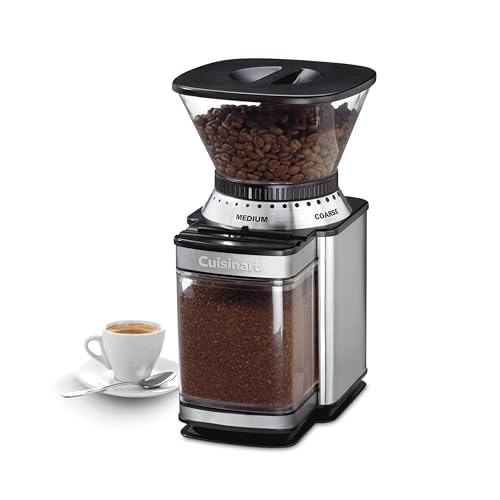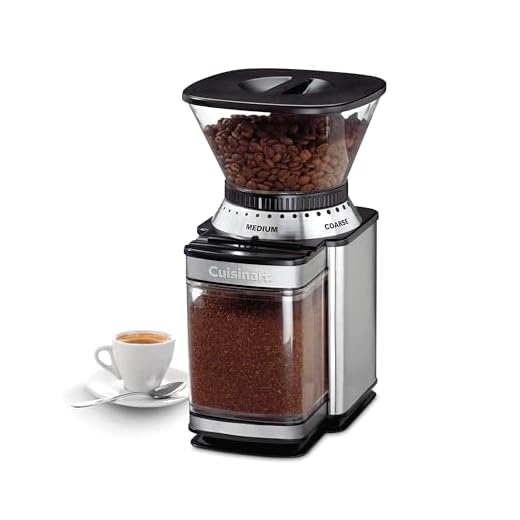



When you enjoy a cup of espresso, one of the things that sets it apart from regular brewed coffee is the layer of rich, golden-brown foam on top, known as crema. This velvety smooth layer is not only visually appealing, but it also adds complexity and depth to the flavor of the espresso. But how exactly is crema produced by a coffee machine?
The key to producing crema lies in the coffee extraction process. A coffee machine, specifically an espresso machine, uses pressure to force hot water through finely ground coffee beans. This high pressure results in the emulsification of the oils in the coffee, which are responsible for the creation of crema. As the water passes through the coffee grounds, it dissolves and extracts oils, flavors, and aromatic compounds. The combination of these oils and the pressure causes the crema to form.
The crema is actually a mixture of carbon dioxide and coffee oils. Carbon dioxide is a natural byproduct of the coffee roasting process, and it is trapped within the coffee beans. When the hot water comes into contact with the coffee, it releases the trapped carbon dioxide, which then expands and creates the foamy layer of crema. The coffee oils, on the other hand, provide the color and the distinctive taste profile that is characteristic of crema.
Not all coffee machines are capable of producing crema. The ability to produce crema requires a specific combination of factors, including the right water temperature, pressure, and grind size. Espresso machines, with their high pressure and precise temperature control, are designed to create the ideal conditions for producing crema. Other types of coffee machines, such as drip brewers or French presses, may not be able to achieve the same level of pressure and temperature consistency, resulting in a lack of crema.
Understanding the Process
The process of producing crema in a coffee machine is a complex one that involves several key steps. By understanding these steps, we can gain insight into how the machine is able to create the rich, velvety layer of foam that characterizes crema.
Step 1: Grinding the Coffee Beans
The first step in the process is grinding the coffee beans. The beans must be ground to a specific consistency, often referred to as “finely ground.” This allows for the optimal extraction of flavor and oils from the beans.
Step 2: Tamping the Coffee Grounds
Once the coffee beans are ground, they are then tamped into the coffee machine’s portafilter. Tamping is the process of applying pressure to the coffee grounds to create a compact, even layer. This step is crucial in ensuring that water passes through the coffee evenly and at the correct pressure.
Step 3: Extraction Process
With the coffee grounds prepared, the extraction process begins. Hot water is forced through the compacted coffee grounds in the portafilter. The water passes through the coffee in a controlled manner, extracting the oils, flavors, and soluble solids.
As the water passes through the coffee, it creates pressure. This pressure causes the coffee oils to emulsify and mix with the water, resulting in the formation of crema. The crema is a foam-like layer that sits on top of the coffee and gives it a rich, smooth texture.
Step 4: Brewing Time
The brewing time is another crucial factor in producing crema. The water should pass through the coffee grounds at a consistent rate to ensure that the right amount of flavor and oils are extracted. If the brewing time is too short, the crema may be thin and lacking in flavor. Conversely, if the brewing time is too long, the crema may become bitter and over-extracted.
Overall, the process of producing crema in a coffee machine is a delicate balance of grinding, tamping, extraction, and brewing time. It requires precision and attention to detail to achieve the perfect cup of coffee with a luscious layer of crema.
What is Crema?
Crema is a key element in a good espresso. It is the golden foam that sits on top of a freshly brewed shot of espresso. It is considered to be the hallmark of a well-extracted espresso, as it is a sign of great taste and quality.
Crema is formed as a result of the emulsification of oils present in the coffee beans, which are released during the brewing process. These oils are combined with carbon dioxide gas that is trapped in the coffee grounds. The pressure created in an espresso machine forces the emulsified oils and gas to the surface, creating the creamy layer known as crema.
The crema not only adds visual appeal to the espresso but also plays a crucial role in enhancing the flavor and texture of the coffee. It provides a smooth and silky mouthfeel, and it acts as a natural insulator, helping to maintain the heat of the coffee for a longer period.
A good crema should be thick and consistent, with a rich golden color. It should not be too thin or too watery, as this may indicate under-extraction or poor quality coffee beans. On the other hand, if the crema is too dark or separated, it may be a sign of over-extraction or improper brewing technique.
In summary, crema is an essential component of a well-made espresso. It adds aesthetic appeal, enhances the flavor, and provides a delightful texture to the coffee. It is indicative of a properly brewed shot of espresso and is a delight for coffee lovers worldwide.
The Role of Pressure
One of the key factors in producing crema in a coffee machine is the pressure used during the brewing process. The pressure plays a vital role in accessing the full flavor and aroma of the coffee grounds, as well as creating the thick, creamy layer of crema on top of the espresso shot.
When water is forced through the tightly packed coffee grounds at high pressure, it extracts the oils and solubles more efficiently. This process emulsifies the oils, creating tiny bubbles that combine with the air to form the creamy texture of crema. The pressure also helps to extract more of the flavors and aromatic compounds in the coffee, resulting in a more intense and flavorful espresso shot.
The ideal pressure for producing crema is typically between 9 and 10 bars (measured in traditional espresso machines). This level of pressure allows for optimal extraction while avoiding over-extraction, which can result in a bitter taste. Some modern espresso machines are capable of producing even higher pressure, up to 15 bars, to further enhance the crema production.
In addition to pressure, other factors such as water temperature, grind size, and bean quality also play a role in crema production. However, without the right pressure, it would be difficult to achieve the desired results. So, next time you enjoy that creamy layer of crema on your espresso shot, you’ll know that the pressure in the coffee machine played a crucial role in its creation.
The Importance of the Coffee Grind
The grind of the coffee beans plays a crucial role in the production of crema when using a coffee machine. The size and consistency of the grind directly impact the extraction process and the quality of the resulting espresso.
Size: The size of the coffee grind affects the extraction rate and the flavor profile of the coffee. For espresso, a fine grind is typically preferred to allow for a slower extraction and a more intense and flavorful shot. A finer grind increases the surface area of the coffee particles and allows for better contact with the hot water, resulting in a stronger flavor and thicker crema.
Consistency: Consistency refers to the uniformity of the coffee grind. When the grind is consistent, the particles have a similar size, which allows for an even extraction. Inconsistent grind sizes can lead to uneven extraction, resulting in an imbalanced flavor and a thinner crema. To achieve a consistent grind, it is recommended to use a quality burr grinder rather than a blade grinder.
Adjustment: The coffee grind can be adjusted to suit personal preferences and the type of coffee being used. Different beans and roast levels require different grind sizes to optimize the extraction process. Experimenting with the grind size can help you find the perfect balance between extraction time, flavor, and the crema produced.
In conclusion, the coffee grind is a critical factor in producing crema when using a coffee machine. The size and consistency of the grind directly influence the extraction process and the quality of the resulting espresso. Understanding the importance of the coffee grind and making adjustments accordingly can greatly enhance your coffee brewing experience.
Why Does Grind Size Matter?
The grind size is a critical factor in determining the quality and flavor of coffee produced by a coffee machine. The consistency of the grind plays a vital role in the extraction process, influencing the rate at which the coffee soluble compounds are released into the brewed coffee.
When it comes to coffee brewing, different grind sizes yield different results. A finer grind size increases the surface area of the coffee particles, allowing for a quicker extraction of flavor compounds. Conversely, a coarser grind size decreases the surface area and slows down the extraction process.
The extraction process relies on a delicate balance between the contact time and the grind size. If the grind size is too fine, the coffee particles can over-extract, releasing excessive bitterness and unpleasant flavors. On the other hand, if the grind size is too coarse, the coffee may be under-extracted, resulting in a weak and watery taste.
Moreover, the grind size also affects the flow rate of water through the coffee bed. A finer grind size can lead to a slower flow rate, allowing for a more even extraction. This helps to extract a wider range of flavors and create a richer and more balanced cup of coffee. A coarser grind size, on the other hand, may result in a faster flow rate, leading to uneven extraction and a less nuanced flavor profile.
It is important to note that the optimal grind size varies depending on the brewing method used. For example, espresso requires a very fine grind size due to its short contact time and pressure-driven extraction. Drip brewing, on the other hand, calls for a medium grind size to achieve a proper balance between extraction and flow rate.
In conclusion, the grind size is a crucial variable that affects the overall flavor and quality of coffee produced by a coffee machine. By understanding the impact of grind size and experimenting with different settings, coffee lovers can fine-tune their brewing process to achieve the perfect cup of coffee.
Q&A
What is crema?
Crema is a creamy, light brown layer that forms on the top of an espresso shot. It is a crucial part of the espresso experience and is considered a sign of a well-made espresso.
How does a coffee machine produce crema?
A coffee machine produces crema by forcing hot water through finely ground coffee beans at high pressure. The pressure causes the soluble oils in the coffee to emulsify, creating tiny bubbles that form the crema on top of the espresso shot.
Why is crema important in espresso?
Crema is important in espresso because it contributes to the taste, aroma, and overall sensory experience of the coffee. It adds a layer of sweetness, balances the acidity, and traps the volatile aromatic compounds that create the unique espresso flavor.
Can I get crema with any coffee machine?
Not all coffee machines can produce crema. Crema requires high pressure and specific brewing conditions that are typically found in espresso machines. However, some advanced coffee makers and pod machines are designed to produce crema-like results.









